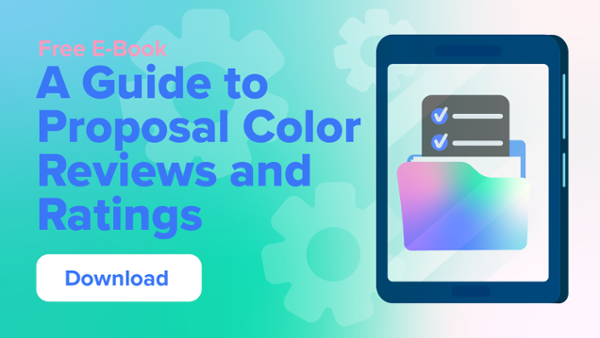The progressive, sequenced structure of color-coded proposal reviews works. That is, it works on major proposals where you have lead time of 30 days or more, especially if there is a draft RFP that can help you jump start the process, and you have access to the client’s resources and Subject Matter Experts.
But what if the proposal is due in only a couple weeks? And there are non-standard items in the RFP? And the SMEs aren't available to provide inputs during the initial stages of proposal development?
For those with more proposal time under your belts, you know this happens all too often. For you who are new to the Government proposal business, don’t run off. Believe it or not, all that process you learned about proposal color reviews still has some value. You just have to be sure you understand the required outcomes from each level of review in order to adapt to the unpleasant realities.
Proposal color reviews are assessments of what should be increasing levels of maturity of the proposal response. Reduced time to complete the proposal does not obviate the need to accomplish these overall review purposes. While there are techniques that focus on backward planning and coordination with client’s experts to make best use of the time for actually writing and assembling the proposal, I want to offer some review “shortcuts” that will achieve the objectives of the color team review without needing to block off large amounts of time.
Whether you call them by the normal color-coded names or not, you still need to have reviews that give you the necessary assessment on how the proposal is progressing toward being compliant, complete, and compelling.
6 Tips for Managing Quick Proposal Reviews:
1. Blend reviews -- A simple approach is to blend reviews. For example, doing a Blue/Pink team review or a Pink/Red team review depending on the time and information available allows you to accomplish the purposes of the reviews but saves significant time.
2. Staggered and rolling reviews – Staggered reviews recognize that some sections are ready for review before others and can be reviewed separately. By contrast, rolling reviews are more snapshots of the document while work continues. Both approaches strive to maximize the use of limited review time while impacting as little as possible on the actual writing and development.
3. Use the whole clock by working in sequence and parallel -- This suggestion is my least favorite; but it works well in very time constrained proposals. Reviewers may be available at odd times such as after normal business hours. Schedule their reviews in the evening or overnight which allows the proposal time to begin recovery immediately the next morning.
4. Reduce the number of reviewers -- Part of the length of the review process is just digesting the comments. The more reviewers that are involved, the more comments to digest. Even using software tools that consolidates comments, it takes a lot of time to go through 5 or 6 sets of comments, understand them, integrate the ones that will be used, and then document the action. Using one or two reviewers for the proposal or each section depending on the type of proposal and its organization allows a much more rapid review and recovery.
5. Be flexible on formatting and editing -- Don’t get hung up on having to have the documents perfectly formatted and edited for each review. It ties up valuable development and recovery time by having a desk top publisher go through the document at every stage. The fact is they will have to do it at the end anyway so while helping make it easier by using the templates, don’t make them do it more than needed. That said, remember that graphics usually require review as well and generally the most lead time.
6. Accept that you may have to step into the breach – Do not assume that everyone is putting the same priority on keeping to the timeline as you are. Make sure that you carefully monitor the progress and keep the client management informed of any problems that will affect the ability to deliver by the due date and time. For areas that aren't progressing well, you may be the one that has to fix it.
TAKEAWAYS:
The approaches above are ways to achieve good document reviews that achieve the objectives of the more formal color-coded review process. These techniques are not substitutes but rather ways of adapting to the environment.
They can help ensure that at the end of the process, no matter how little time is available, that you achieve a proposal that, at the very minimum, is compliant and adequately represents the client’s technical solution and capabilities to meet the requirements in the RFP successfully. What are your tips for proposal reviews on a time constrained proposal?








